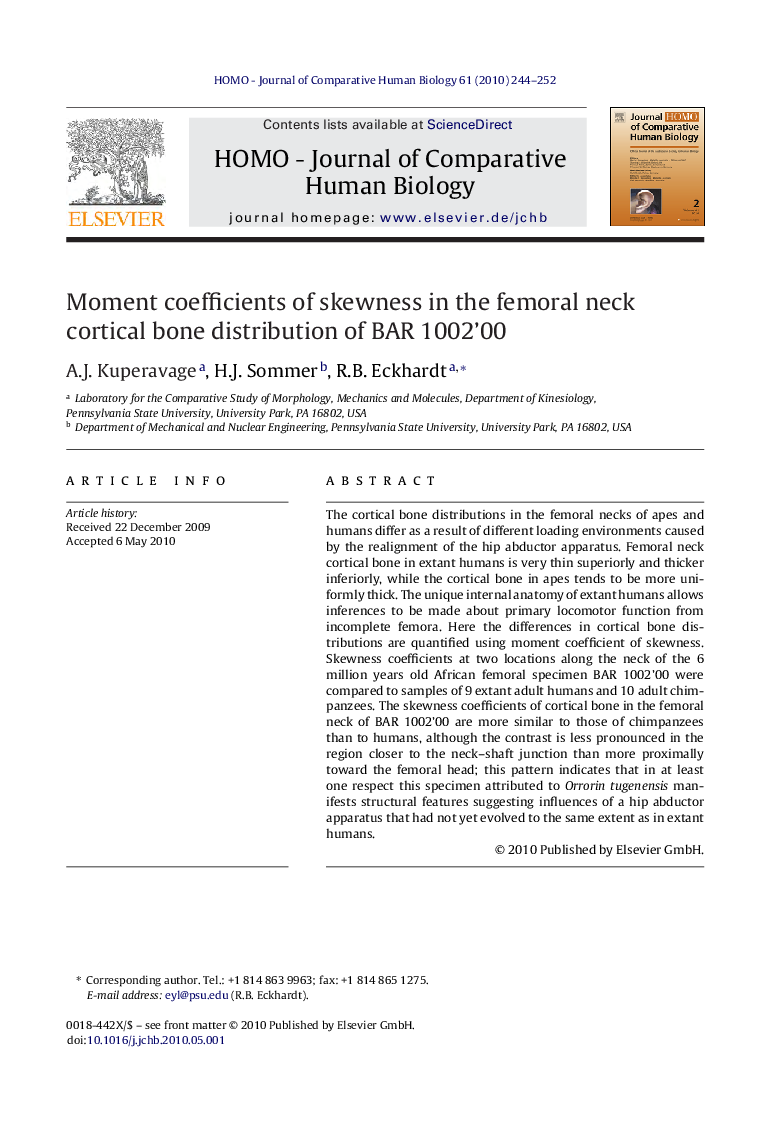| Article ID | Journal | Published Year | Pages | File Type |
|---|---|---|---|---|
| 100402 | HOMO - Journal of Comparative Human Biology | 2010 | 9 Pages |
The cortical bone distributions in the femoral necks of apes and humans differ as a result of different loading environments caused by the realignment of the hip abductor apparatus. Femoral neck cortical bone in extant humans is very thin superiorly and thicker inferiorly, while the cortical bone in apes tends to be more uniformly thick. The unique internal anatomy of extant humans allows inferences to be made about primary locomotor function from incomplete femora. Here the differences in cortical bone distributions are quantified using moment coefficient of skewness. Skewness coefficients at two locations along the neck of the 6 million years old African femoral specimen BAR 1002’00 were compared to samples of 9 extant adult humans and 10 adult chimpanzees. The skewness coefficients of cortical bone in the femoral neck of BAR 1002’00 are more similar to those of chimpanzees than to humans, although the contrast is less pronounced in the region closer to the neck–shaft junction than more proximally toward the femoral head; this pattern indicates that in at least one respect this specimen attributed to Orrorin tugenensis manifests structural features suggesting influences of a hip abductor apparatus that had not yet evolved to the same extent as in extant humans.
